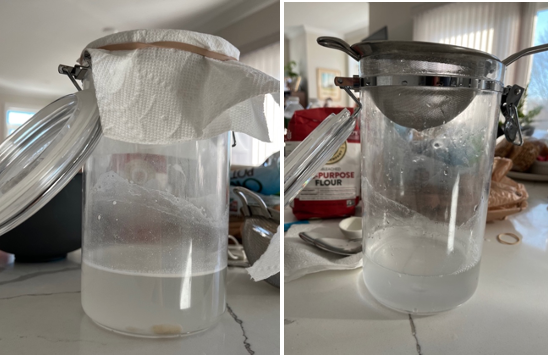Finally, it is time to test the system! Testing is one of the final hurdles before your engineering project can be used by the client or the public, and it is critically important to perform it carefully. Here is the first thing to be careful of: DO NOT DRINK THE FILTERED WATER. Even if your filter is perfect, and the water looks clean and clear after filtration, it still isn’t safe to drink. This activity is about learning the engineering process, so that maybe one day you can become the next expert engineer for filtering safe drinking water. It does not teach you how to effectively filter dirty water so that it is safe for humans or animals to drink.
Evaluate: Combine clean water and the materials you want to filter (e.g. dirt, coffee grinds, etc.) in a 32:1 ratio (one quart of water for every two tablespoons of material). Use a measuring cup and measuring spoons. Then, take two cups of the murky water, and slowly pass it through the filter, collecting the filtered product that comes out of the system. As a class (or individually, if you are outside of a classroom), rank your filtered product on the following scale:
- No material remains (looks like drinking water – but do not drink it!)
- About one-quarter of the material remains
- About half of the material remains
- About three-quarters of the material remains
- All material remains (like the original muddy water)
You have now successfully built a water filtration system! Take some time to discuss as a class – or with your friends and family – what worked and what did not. If you got a score of 0, what was so successful? If you got a score of 5, what could you have done differently?

Figure 3. An experiment setup before (left) and after (right) filtration.










